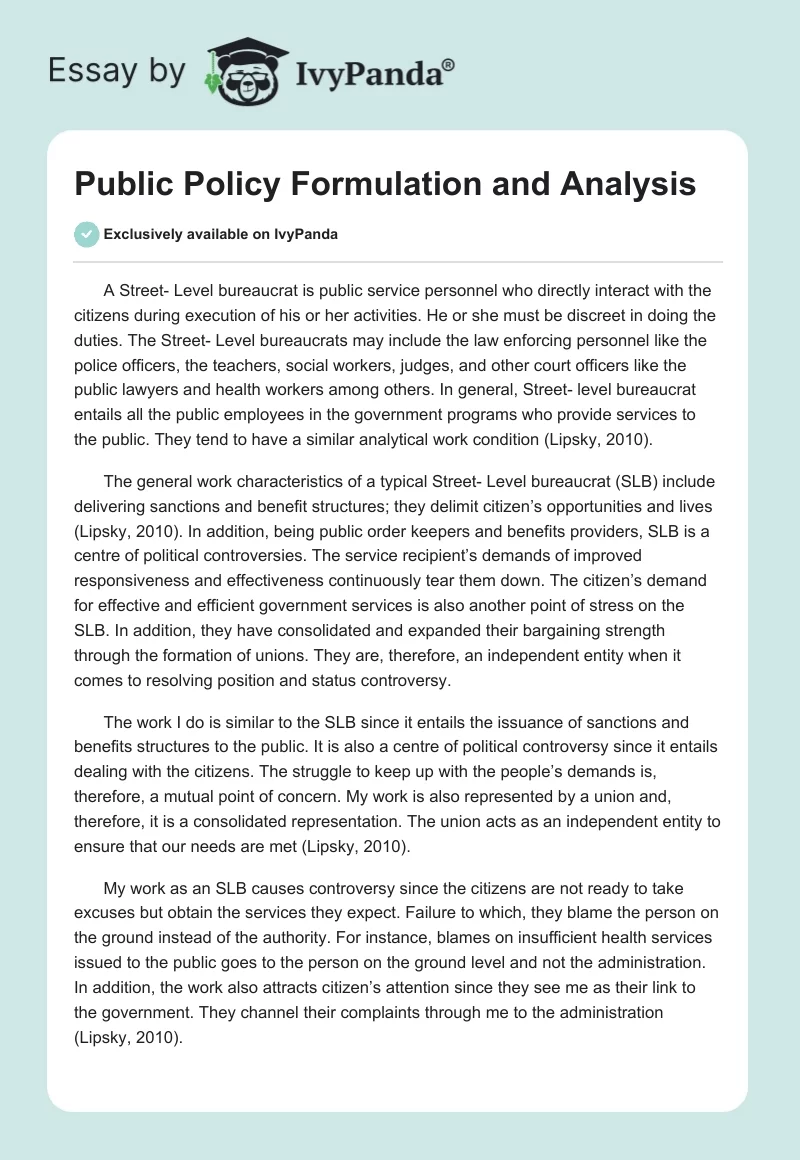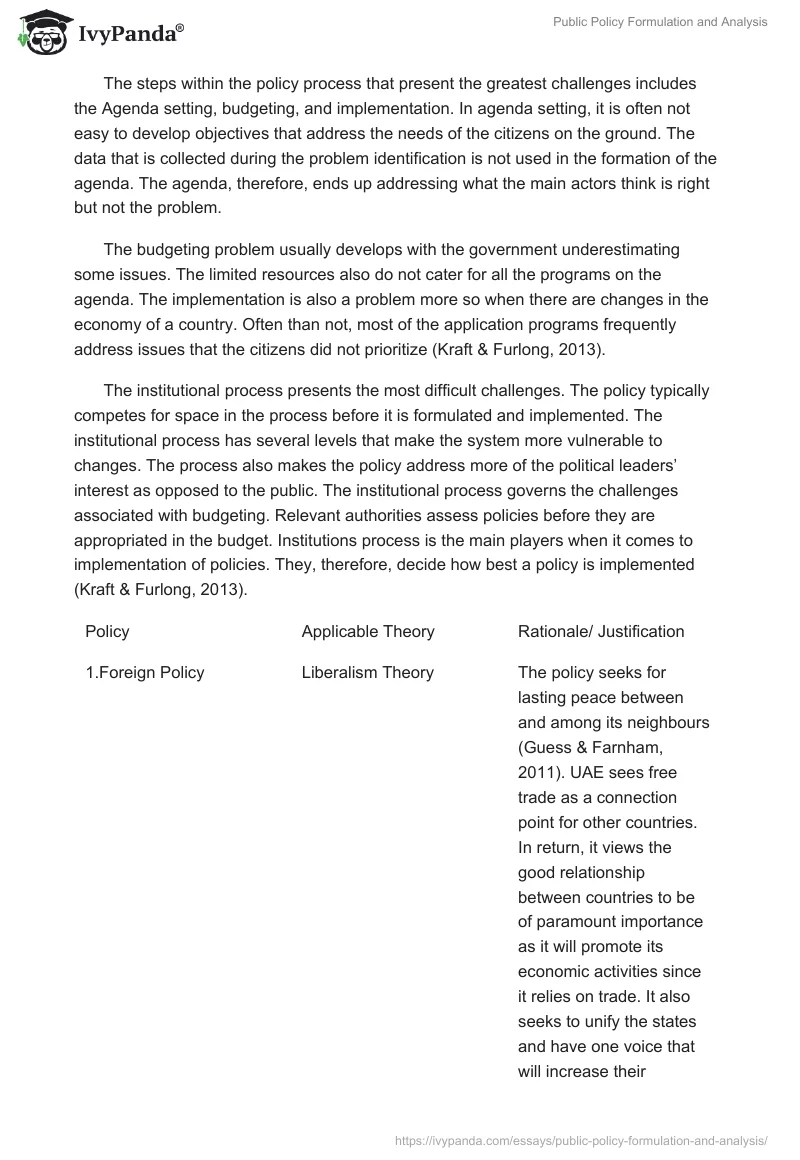A Street- Level bureaucrat is public service personnel who directly interact with the citizens during execution of his or her activities. He or she must be discreet in doing the duties. The Street- Level bureaucrats may include the law enforcing personnel like the police officers, the teachers, social workers, judges, and other court officers like the public lawyers and health workers among others. In general, Street- level bureaucrat entails all the public employees in the government programs who provide services to the public. They tend to have a similar analytical work condition (Lipsky, 2010).
The general work characteristics of a typical Street- Level bureaucrat (SLB) include delivering sanctions and benefit structures; they delimit citizen’s opportunities and lives (Lipsky, 2010). In addition, being public order keepers and benefits providers, SLB is a centre of political controversies. The service recipient’s demands of improved responsiveness and effectiveness continuously tear them down. The citizen’s demand for effective and efficient government services is also another point of stress on the SLB. In addition, they have consolidated and expanded their bargaining strength through the formation of unions. They are, therefore, an independent entity when it comes to resolving position and status controversy.
The work I do is similar to the SLB since it entails the issuance of sanctions and benefits structures to the public. It is also a centre of political controversy since it entails dealing with the citizens. The struggle to keep up with the people’s demands is, therefore, a mutual point of concern. My work is also represented by a union and, therefore, it is a consolidated representation. The union acts as an independent entity to ensure that our needs are met (Lipsky, 2010).
My work as an SLB causes controversy since the citizens are not ready to take excuses but obtain the services they expect. Failure to which, they blame the person on the ground instead of the authority. For instance, blames on insufficient health services issued to the public goes to the person on the ground level and not the administration. In addition, the work also attracts citizen’s attention since they see me as their link to the government. They channel their complaints through me to the administration (Lipsky, 2010).
The steps within the policy process that present the greatest challenges includes the Agenda setting, budgeting, and implementation. In agenda setting, it is often not easy to develop objectives that address the needs of the citizens on the ground. The data that is collected during the problem identification is not used in the formation of the agenda. The agenda, therefore, ends up addressing what the main actors think is right but not the problem.
The budgeting problem usually develops with the government underestimating some issues. The limited resources also do not cater for all the programs on the agenda. The implementation is also a problem more so when there are changes in the economy of a country. Often than not, most of the application programs frequently address issues that the citizens did not prioritize (Kraft & Furlong, 2013).
The institutional process presents the most difficult challenges. The policy typically competes for space in the process before it is formulated and implemented. The institutional process has several levels that make the system more vulnerable to changes. The process also makes the policy address more of the political leaders’ interest as opposed to the public. The institutional process governs the challenges associated with budgeting. Relevant authorities assess policies before they are appropriated in the budget. Institutions process is the main players when it comes to implementation of policies. They, therefore, decide how best a policy is implemented (Kraft & Furlong, 2013).
References
Guess, G. M., & Farnham, P. G. (2011). Cases in public policy analysis. Washington, D.C: Georgetown University Press.
Knoepfel, P. (2011). Public policy analysis. Bristol: Policy Press.
Kraft, M. E. & Furlong, S. R. (2013). Public Policy: Politics, Analysis, and Alternatives. Los Angeles: Sage.
Weimer, D. & Vining. A.R. (2014). Policy Analysis: Concepts and Practice, 5th Edition (Pearson New International Edition). Essex: Pearson.
Lipsky, M. (2010). Street-Level Bureaucracy: Dilemmas of the Individual in Public Service. New York, NY: Russell Sage Foundation.


